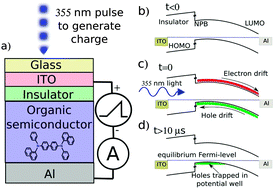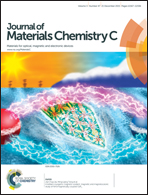Organic semiconductors with a charge carrier life time of over 2 hours at room temperature†
Abstract
Recently, Gao et al. reported being able to measure significant quantities of photogenerated charge up to one hour after it had been generated in an organic semiconductor device. The aim of this paper is twofold; (a) to provide conclusive experimental evidence to support the picture of device operation; and (b) to understand and demonstrate how changes to the device structure and materials can be used to tune the charge carrier lifetime. By tuning both the materials used, and the device structure we are able to observe a charge carrier life time of over 2 hours and still extract significant amounts of charge from the device after 5 hours. This is achieved by engineering the band structure of the device to control the spatial overlap of the stored photoexcited electron and hole populations and thus the recombination rate. By performing lifetime measurements as a function of charge carrier density and applied voltage we find the recombination rate has a 0th order dependence on carrier density, and elucidate the mechanisms responsible for these long charge carrier life times. This work is of technological significance for the development of organic electronic high sensitivity photodetectors and memory elements.


 Please wait while we load your content...
Please wait while we load your content...